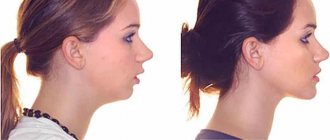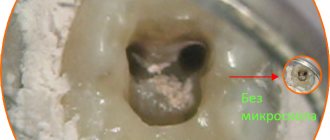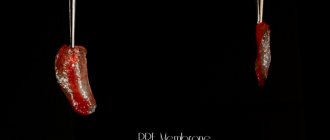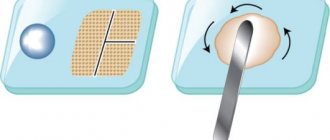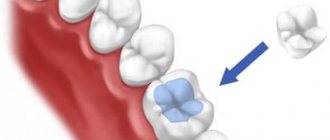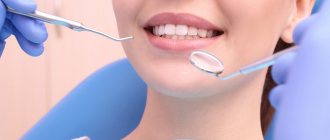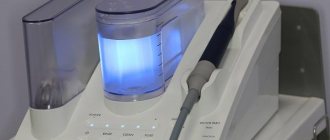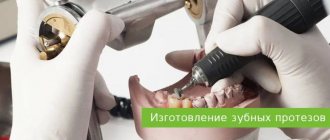Nobody likes going to the dentist, even though everyone knows how important oral health is and how strongly it relates to our overall health. But new technologies - from virtual reality to artificial intelligence (AI) - will soon revolutionize dentistry and our overall attitude to oral health.
In this review, we take a look at 9 new technologies that will change this area of healthcare in the near future.
Artificial intelligence
Already, dentists are using software to provide information to make clinical decisions. Soon such programs will work on the basis of AI algorithms, which will significantly facilitate the work of a doctor.
Such intelligent algorithms can be integrated into the healthcare system to analyze health data, research results and treatments to offer diagnostic and therapeutic recommendations for individual patients.
This will be possible thanks to the accumulation of information, in particular genetic data, which will allow a deeper understanding of the system of individual care for each patient. With AI tools that have access to such information, doctors will be able to select the best treatment options and increase the likelihood of success.
With ever-growing health data, AI algorithms can help professionals better manage dental problems. In 2022, researchers developed a machine learning method to accurately quantify immune cells near oral cancer cells. This gives a better idea of the cancer's spread and resistance, thereby helping to determine the chances of survival. Others are using neural networks to better detect tooth decay and periodontitis in X-rays. Such approaches may become standard practice in the near future.
How much does digital technology cost?
A good modern service provided by a digital dentistry clinic in Moscow, with modern equipment, cannot be cheap! There are many doctors offering crowns and veneers at a price that is not even half the cost of the work of doctors practicing in digital dentistry. The cost of restoration is not so high, and the price consists of the cost of the equipment itself - it is very expensive. There are a number of cases when digital technologies help to cope with a problem that cannot be solved without their use. For example, a patient’s tooth has chipped off, and he has an important event tomorrow.
Publisher: Expert magazine about dentistry Startsmile.ru
Teledentistry
Patients with special needs, elderly people in nursing homes and people living in rural areas have difficulty accessing a dentist and almost never have a choice. This may change significantly with the rise of teledentistry.
Telemedicine services, already offered in the US by companies such as Teledenists and MouthWatch, make it easier to access dental services. These services are significantly less expensive for patients, offer lower-cost prevention options, and allow patients to consult with otherwise unavailable health care providers. For example, MouthWatch's TeleDent service offers an all-in-one teledentistry platform that allows patients to take photos of their mouth or teeth, remotely send relevant information to the dentist, and conduct consultations in real time. The dentist can start a video chat with the patient and caregiver so that the provider can actually see and talk to the patient, establish rapport with them, and then bring them into the doctor's office (if necessary).
Candid, which provides teeth straighteners and treatment plans to patients, has tested a technology called Dental Monitoring that involves handing patients a connected ScanBox device. The device looks like a virtual reality headset. But instead of covering people's eyes, it looks into their mouths and controls how they use the aligners.
The ScanBox connects to the patient's smartphone, captures images and sends them to a remote orthodontist. The uploaded images are also scanned by an artificial intelligence algorithm which can track the patient's progress, assess oral hygiene and identify any potential health problems such as visible tooth decay or gum recession.
An orthodontist reviews each patient's case, determines whether they are eligible for treatment, and if so, creates a treatment plan. The aligners are then mailed to patients, who typically must be at least 16 years old and have mild to moderate alignment problems.
We also note that as the importance of remote care has increased during the pandemic, telemedicine is also gaining momentum, and authorities are responding accordingly.
Automation programs for dentistry
Today their choice is quite extensive. The task of the clinic manager is to choose the most functional and easy-to-use dental program without overpaying. There are common modules embedded in almost all proposed options. These include: making an appointment, CRM, electronic outpatient card, automated accounting, statistics, as well as templates for the necessary documents.
Electronic appointment booking and CRM module
It allows you to book a patient with the right specialist for a specific time in seconds, displays all the necessary information about the client on the monitor, and allows you to quickly add the patient to the waiting list if necessary. On the eve of the appointment, the program itself will remind the administrator about the need for a follow-up call, and will also allow you to send an SMS with a reminder. Thanks to the electronic payment of the patient, errors on the part of the employees responsible for the cash register are minimized.
Electronic outpatient card
Automates the doctor’s work and reduces the time required to fill out mandatory documentation. A visual dental formula and convenient pop-up “tips” when hovering the cursor allow even doctors who are not accustomed to working with a computer to quickly cope with this task. In addition, the electronic card becomes available to doctors from other branches of the clinic if the patient transfers there for some reason.
Accounting for tools, consumables and cash flow.
Facilitates and automates the above functions, significantly reduces costs for subsequent purchases by tightening cost control. Allows you to determine the efficiency of employees and accurately identify “weak links” in the work process that lead to losses.
Statistics and analytics
The program keeps records of client visits to the clinic, determines their status, shows the presence of advances or debts, as well as all the work that was done with this patient. Advertising sources and their effectiveness are automatically recorded. Work with the laboratory is greatly simplified and systematized. Statistics will also tell you the required volume of purchases of drugs and consumables, which will allow you to avoid unnecessary costs.
Document templates
Most popular dental clinic management programs contain all the necessary document templates, including patient outpatient records, certificates for the Federal Tax Service and information consents. All listed documents can be printed if necessary.
Smart toothbrushes
The “smart” toothbrushes that have appeared on the market, according to their manufacturers, make it much easier to maintain oral hygiene and prevent the formation of plaque or caries.
The Kolibree Electric Toothbrush provides proper teeth cleaning and offers children different games to maintain the habit of brushing regularly. The Philips Sonicare smart toothbrush comes with sensors in the handle. They provide real-time feedback through a companion app, warning you if you're using too much force when brushing your teeth and even coaching the user on how to brush properly. There are several such devices on the market, including from companies such as Colgate and Oral-B.
True, we must admit that these are technologies that are not particularly necessary. While having a personal trainer to optimize your daily oral hygiene routine may seem tempting, not everyone is enthusiastic about the technology. An app like this tells you to change your brushing, but doesn't improve that technique. Rather, this will be done by the dentist, who can demonstrate the correct technique at the next appointment.
Additionally, by purchasing smart toothbrushes from companies like Procter & Gamble and Philips Oral Healthcare, you agree to their privacy policies, which allow them to share your data with third parties. So you might want to consider getting a toothbrush like this only from a company that gives you more control over your data, or one that won't share it with third parties at all.
Metal-free restorations using CEREC technology.
Dentistry of the 20th century was focused on restoring the lost function of teeth and dentition, so restorations and dentures were mostly metal. They are reliable in terms of long-term preservation of tooth function, but the cosmetic properties were unsatisfactory in terms of restoring lost aesthetics.
With increasing demands not only on function, but also on aesthetics, plastic dentures began to appear: plastic crowns, plastic inlays. These are dentures of the second half of the 20th century, which made it possible to significantly improve the aesthetics of prosthetics but, alas, at the expense of function.
Modern restorative dentistry is aimed not only at restoring the anatomical shape of the anterior and posterior teeth, but also at achieving maximum cosmetic results.
The creation of modern metal-ceramic and all-ceramic dentures has made it possible to obtain an optimal combination of high aesthetic properties of dentures or restorations with their functional properties and durability.
12 pages, 5746 words
Treatment, possible errors and complications in the diagnosis and treatment of dental caries
... can be considered a successful conservative method of caries treatment. The first developers of the method were the Americans Wasserman and Coulourides, and in 1945-48. Classic experiments on volunteers and medical students, confirming the possibility of conservative treatment of caries, were carried out by a German scientist...
Any treatment must be scientifically based, therefore dentistry of the 21st century uses in its arsenal biologically compatible materials from which highly artistic aesthetic restorations can be created with high quality. In this regard, the third factor that determines the effectiveness of restoration of teeth and dentition is biocompatibility. Unfortunately, metal dentures, just like metal-ceramic dentures, have the disadvantage that some patients suffer from increased sensitivity to metal elements. Therefore, in terms of aesthetic properties, functional durability and biocompatibility, the best material in today's dentistry is ceramics.
Many methods have been proposed for the production of such restorations. One of the high-precision, affordable and modern methods is CAD/CAM technology, i.e. method of computer modeling and computer milling.
The great advantage of this system is that it makes it possible to create a high-quality ceramic restoration directly at the patient's chair in one visit, which differs from traditional treatment methods in terms of saving time for the patient and the doctor.
Factory-made porcelain (ceramic, glass-ceramic, single and multi-color) blocks meet all general medical, physical, mechanical and technological requirements.
It is possible to individualize the restoration by applying so-called porcelain “effect” masses and additional tinting, followed by firing or using colored cements for fixation.
Clinical studies have confirmed the durability of such prostheses, their functionality and the compliance of restorations with all aesthetic requirements.
The perfection and convenience of the CAD-CAM system allows you to set the necessary parameters for the manufacture of the designed structure and provide in advance the thickness of the adhesive layer and the density of the proximal contacts. Using a virtual articulator, the system allows you to achieve an optimal relationship with antagonist teeth not only in central, but also in lateral occlusion.
The CAD-CAM device of CEREC-3 technology is a revolutionary transition from its predecessors. This unique system uses volumetric “3D” modeling and milling with two cutters: cylindrical, torpedo or stepped.
The “3D” system uses many functions, such as replication - mirror image, correlation - a photo of the tooth before preparation, and later the use of its anatomical shape when modeling on the monitor screen. The program allows you to create contacts of different densities with antagonist teeth, evaluate the density of contact, and make a preventive increase in density, taking into account the patient’s age. The bank of anatomical shapes and sizes of surfaces of all groups of teeth has been enriched. The time for making a crown from the moment of taking an optical impression to fixing the crown is 40 minutes.
Highly durable and aesthetic bridges, the frames of which are made of zirconium oxide, are becoming increasingly widespread. They can be painted in the desired color, and layer-by-layer applied highly aesthetic ceramics bring them as close as possible to the natural transparency of teeth.
29 pages, 14022 words
Consolidated reporting concept principles and methods of preparation
... profit and loss analysis of the main financial indicators of the activities and accounting policies of OJSC Holding MATRITSA; develop recommendations for eliminating identified deficiencies and improving the methodology for preparing consolidated reporting at the enterprise. The object of study of this work is consolidated reporting, economic...
Examples of similar educational works
Treatment, possible errors and complications in the diagnosis and treatment of dental caries
...your development. This can also be considered a successful conservative method of treating caries. The first developers of the method were the Americans Wasserman and Coulourides, and in 1945-48. Classic experiments on volunteers, medical students, confirming...
Information technologies for strategic planning
... Computer information technologies in accounting. Technology of electronic... strategic and tactical marketing plans and control over their implementation. ... designed for planning and analysis... Cash flow. 2) Working with a group of projects. ...
New technologies and the society of the future: trends and forecasts
... and social trends and try to predict future trends. The point of studying the future is to build modern forecasts of the “society of the future”, the “information society” from passive… their development. Latest Japanese forecast made in...
Risk factors influencing the occurrence of gum recession in patients of different age...
... 6. Comparison of age groups according to the indicator Gum Recession, (Miller class) Gum Recession, class 35 and less 36-55 56 ... group of 85.7% of patients were diagnosed with Gum Recession class 4, and 14.3% - Gum Recession 3 class. Table 7. Distribution...
Augmented Reality
Augmented reality (AR) technology is already beginning to be used in dentistry for both educational and clinical purposes.
Image Navigation's DentSim Simulator system pairs this technology with a mannequin on which students can perform procedures, receiving immediate feedback as their movements are tracked. This helps them quickly identify where they need to improve and develop their skills. Today, the system is already used by 8,500 students at dental schools around the world.
In dental practice, this technology is more common in reconstructive and aesthetic procedures to help patients know what they will look like after treatment. For example, SmartTek and Kapanu have developed AR applications that use a phone or tablet camera to superimpose a virtual image of an improved set of teeth onto real teeth before the procedure. The application works by comparing a 3D scan of the patient's oral cavity (many doctors already perform such an operation in Europe) with pre-prepared sets of scans, which represent healthy teeth obtained during similar treatment procedures.
The program uses a camera to take pictures of the patient's mouth and teeth, then overlays an image of the corrected teeth, and that's where the fun begins. Then the user can correct his own smile by adjusting his teeth - the distance between the teeth, different shapes of teeth, etc. Moreover, all these changes are visible “live”.
After the patient has “customized his dentition” and carefully assessed it in the augmented reality “mirror,” the finished model is sent to production, wherever such tooth replacement is performed.
A virtual reality
Just like augmented reality technology, virtual reality (VR) can be used for training and advanced training of dentists. Typically, only a couple of students can peer over the surgeon's shoulder as he performs a complex operation, and this significantly complicates the learning process. But a VR camera allows you to broadcast an operation around the world and do it literally “through the eyes of a surgeon” if students use VR glasses. For example, back in 2015, Nobel Biocare organized a broadcast of dental surgery, which was accessible through virtual reality devices.
Virtual reality technology is also useful for patients. An experiment involving 69 patients showed that VR can be used as an effective distraction tool. Patients wore glasses that displayed calming natural scenes and then recalled the treatment more positively. One such VR tool for reducing dental anxiety is the OperaVR system.
Can the patient actively participate in the treatment process?
Yes, and this is another advantage of digital technology. If a patient is interested in 3D dentistry, what it is, he can visually observe in the clinic the entire process of planning and treatment: how his future teeth are recreated, the shape of the cusps, fissures, how the color is determined. This dramatically reduces the percentage of dissatisfaction with the final result and outcome of treatment. The patient first sees on the computer what his new teeth will be like, then he can evaluate the fitting restoration and make adjustments. The person is fully involved in this work, watches it with pleasure, films it, posts it on social networks - it turns out to be teamwork between the doctor and the patient.
Modeling and 3D printing
Computer modeling and manufacturing technologies using 3D printing are beginning to revolutionize dental laboratories. They are being transformed into significantly cheaper and more efficient digital laboratories.
With the help of new technologies, the manufacturing process, for example, of crowns, is significantly accelerated. The tooth is prepared for installation of the prosthesis, then a picture of it is taken, which is sent to the computer, which controls the machine, which produces a crown suitable for this particular patient right in the office and very quickly.
By using 3D printing, all intermediate stages that create a queue are eliminated, and the doctor’s work is significantly simplified. Such solutions for dentists are already offered by Stratasys, Envisiontech and FormLabs.
3D printers are also capable of faster and more accurate creation of orthodontic models, surgical guides, aligners, retainers, and more dental equipment. These are tasks that would take longer using traditional methods. This helps improve workflows, reduce errors and effort, ultimately saving time and money.
The importance of this technology has been further highlighted during the COVID-19 crisis as it can bypass traditional supply chains to meet hospital needs. Since the technology is expected to become an integral part of medical practice, it will also be introduced in dental laboratories.
Information technology in dentistry
INTRODUCTION
The introduction of information technologies is the most important direction in the development of domestic healthcare. The set of measures currently being carried out by the Russian Ministry of Health to improve healthcare management provides for the complete automation of decision-making and decision-making processes through the introduction of computer and telemedicine technologies.
Healthcare informatization in Russia has almost half a century of experience. But if at the initial stage of its development the main emphasis was on solving diagnostic problems, then later a significant place was occupied by information systems that provide health care managers with analytical data. [1]
Digital technology has become an integral part of any dental industry. For example, digital X-ray images with light-activated or other process-based systems, as well as digital archives of X-ray and intraoral images, have been introduced into dental practice. These technologies are especially useful for patient consultations, as they provide a clear visual representation of the intended treatment, and therefore can play an important role in shaping the patient's desire to choose a more expensive, but at the same time, the most optimal option for the restoration of his teeth. Modern digital systems can provide more detailed monitoring of a surgical procedure. Finally, they make it possible to accurately determine the color of a patient's teeth regardless of lighting conditions, which significantly improves the quality of information transmitted from the doctor's office to the dental technician. [2]
Technologies of the XXI century
The introduction of CAD/CAM technology has sparked a digital revolution in dental laboratories. Now the products needed to perform any type of dental work, from the simplest to the most complex, can be created on a monitor screen and then simply and easily manufactured in the laboratory or elsewhere. The current trend is the production of ergonomic CAD/CAM systems, high-resolution laser scanners and high-speed robots designed for machining many ceramic materials and metal alloys. Such technologies offer a number of valuable benefits to dental laboratory owners.
CAD/CAM technology has expanded the possibilities of using ceramic materials for the manufacture of all-ceramic prostheses. Most often, for the manufacture of single crowns, bridges and other orthopedic structures, glass ceramics reinforced with leucite, alumina ceramics and zirconium dioxide are used. In particular, zirconium dioxide has high potential in this area, which, due to its high strength, is able to withstand high loads acting in the chewing areas of the dentition. In addition, zirconia is an ideal material for creating special prosthetics, such as primary crowns for prosthetic structures that use double crowns. Moreover, the optical properties (transmission, light reflection) of all-ceramic dentures and natural teeth are similar, so ceramic restorations can meet the highest esthetic requirements.
CEREC technology.
Dentistry today is at a new stage of technical development.
Today, it is impossible not to notice that many dental clinics and dental laboratories are increasingly opening their doors to all-ceramic restorations using computer technology. And it’s not easy for specialists to want to work with these technologies. Increasingly, patients are becoming the driving force stimulating doctors and technicians to change their routine. When faced with a choice, they give preference to all-ceramic restorations, arguing that the cost of this service is quite comparable to metal-ceramic restoration. And, of course, the fundamental factors in this case are the biocompatibility and natural appearance of restorations made from modern dental ceramic materials.
Thanks to CEREC technology, both clinics and laboratories have the opportunity to reach a new level of their professional activities. CEREC technology is the new inLab 3D V3 software. 01, providing users with even more options, and the improved inLab MC XL sander – more productive and less noisy. Despite the apparent evolution of these changes, users received an even more powerful tool for realizing their ideas in the field of metal-free structures.
The hardware and software are not everything, since the quality of manufactured all-ceramic structures depends to a very large extent on the initial blanks from which the restoration is machined. That is why, to this day, the production of high-quality metal-free bridges is still a difficult task. For a long time, there was no material that would have such qualities as high strength and wear resistance, and grinding such a material should take little time during the manufacturing process of the restoration.
Now confident steps towards the creation of such, without exaggeration, long-awaited material have been made by companies such as Vita, Ivoclar Vivadent, which are actively cooperating with Sirona.
An extremely important, although outwardly not noticeable, novelty was the release of new Vita CADTemp blocks. Their appearance can radically change the traditional approach to the work of a specialist using CEREC technology, making it more consistent, logical and accurate. These blocks are made of aesthetic composite material and are intended for the manufacture of temporary bridges.
The process of modeling bridges corresponds to all the main stages that take place when creating an all-ceramic crown (optical impressions, drawing the boundaries of the preparation, selecting teeth from a database, etc.). The new software automatically models the bridge. In this case, the dentist is assigned the role of observer and controller - all that remains is to control the process, if necessary, adjusting the finished model. Thus, even before the grinding phase begins, the specialist has every opportunity to bring the restoration to perfection using software tools.
In fact, we are talking about a more coordinated and close interaction between the software shell and the CEREC hardware complex. So, now there is the possibility of additional quality control of the design being performed. According to this scheme, the dentist makes optical impressions of the prepared teeth and teeth and antagonist teeth, models, manufactures and installs a temporary bridge, after which he makes an additional optical impression of the occlusal surface. He then sends the data and optical impressions to a dental laboratory, which creates the frame of the bridge.
In turn, the laboratory has the opportunity to model and manufacture individual crowns from glass ceramics or feldspar, taking into account the data from optical casts and the anatomical shapes of temporary bridges. Such crowns are installed on the frame of the bridge after the sintering process of the latter. This approach allows us to raise the accuracy of the work performed to a new level.
Thanks to innovations in the CEREC system, the dentist is experiencing significant time savings! The high precision of the new inLab MC XL grinding units allows us to say with confidence that structures made using this technology are installed as quickly as restorations made in the laboratory using the traditional method.
Cooperation between dentists and dental technicians is gradually reaching a new level.
CEREC is a worthy alternative to metal-ceramic restorations!
Metal-free restorations using CEREC technology.
Dentistry of the 20th century was focused on restoring the lost function of teeth and dentition, so restorations and dentures were mostly metal. They are reliable in terms of long-term preservation of tooth function, but the cosmetic properties were unsatisfactory in terms of restoring lost aesthetics.
With increasing demands not only on function, but also on aesthetics, plastic dentures began to appear: plastic crowns, plastic inlays. These are dentures of the second half of the 20th century, which made it possible to significantly improve the aesthetics of prosthetics but, alas, at the expense of function.
Modern restorative dentistry is aimed not only at restoring the anatomical shape of the anterior and posterior teeth, but also at achieving maximum cosmetic results.
The creation of modern metal-ceramic and all-ceramic dentures has made it possible to obtain an optimal combination of high aesthetic properties of dentures or restorations with their functional properties and durability.
Any treatment must be scientifically based, therefore dentistry of the 21st century uses in its arsenal biologically compatible materials from which highly artistic aesthetic restorations can be created with high quality. In this regard, the third factor that determines the effectiveness of restoration of teeth and dentition is biocompatibility. Unfortunately, metal dentures, just like metal-ceramic dentures, have the disadvantage that some patients suffer from increased sensitivity to metal elements. Therefore, in terms of aesthetic properties, functional durability and biocompatibility, the best material in today's dentistry is ceramics.
Many methods have been proposed for the production of such restorations. One of the high-precision, affordable and modern methods is CAD/CAM technology, i.e. method of computer modeling and computer milling.
The great advantage of this system is that it makes it possible to create a high-quality ceramic restoration directly at the patient's chair in one visit, which differs from traditional treatment methods in terms of saving time for the patient and the doctor.
Factory-made porcelain (ceramic, glass-ceramic, single and multi-color) blocks meet all general medical, physical, mechanical and technological requirements.
It is possible to individualize the restoration by applying so-called porcelain “effect” masses and additional tinting, followed by firing or using colored cements for fixation.
Clinical studies have confirmed the durability of such prostheses, their functionality and the compliance of restorations with all aesthetic requirements.
The perfection and convenience of the CAD-CAM system allows you to set the necessary parameters for the manufacture of the designed structure and provide in advance the thickness of the adhesive layer and the density of the proximal contacts. Using a virtual articulator, the system allows you to achieve an optimal relationship with antagonist teeth not only in central, but also in lateral occlusion.
The CAD-CAM device of CEREC-3 technology is a revolutionary transition from its predecessors. This unique system uses volumetric “3D” modeling and milling with two cutters: cylindrical, torpedo or stepped.
The “3D” system uses many functions, such as replication - mirror image, correlation - a photo of the tooth before preparation, and later the use of its anatomical shape when modeling on the monitor screen. The program allows you to create contacts of different densities with antagonist teeth, evaluate the density of contact, and make a preventive increase in density, taking into account the patient’s age. The bank of anatomical shapes and sizes of surfaces of all groups of teeth has been enriched. The time for making a crown from the moment of taking an optical impression to fixing the crown is 40 minutes.
Highly durable and aesthetic bridges, the frames of which are made of zirconium oxide, are becoming increasingly widespread. They can be painted in the desired color, and layer-by-layer applied highly aesthetic ceramics bring them as close as possible to the natural transparency of teeth.
Intraoral camera
One of the biggest inconveniences that we encounter in the dentist's chair is the inability to open our mouth even wider, which does not allow the doctor to clearly see what he needs to see, even with the help of his dental mirror. Such situations are not only inconvenient for both the patient and the doctor, but also painful. An intraoral camera solves this problem.
Various types of such devices are already offered by MouthWatch, Dürrdental and Carestream Dental. Recent developments in this area make it possible to create revolutionary devices with unique “liquid” lenses that work like the human eye, allowing you to easily obtain a clear, detailed image of all corners of the patient’s mouth.
For example, the MouthWatch mobile camera is a special medical tool for visualizing the condition of the inner surface of the mouth, which, unlike existing systems, is very inexpensive. The device connects to a computer or tablet via USB and includes special MouthWatch Home Monitoring software and an image capture program. The system integrates with popular imaging systems such as Dexis, Schick, Apteryx and many others. The camera does not need to be focused, and it is controlled with just one button.
Such devices are very useful for launching teledentistry services.
CEREC technology. Dentistry today is at a new stage of technical development.
Today, it is impossible not to notice that many dental clinics and dental laboratories are increasingly opening their doors to all-ceramic restorations using computer technology. And it’s not easy for specialists to want to work with these technologies. Increasingly, patients are becoming the driving force stimulating doctors and technicians to change their routine. When faced with a choice, they give preference to all-ceramic restorations, arguing that the cost of this service is quite comparable to metal-ceramic restoration. And, of course, the fundamental factors in this case are the biocompatibility and natural appearance of restorations made from modern dental ceramic materials.
Thanks to CEREC technology, both clinics and laboratories have the opportunity to reach a new level of their professional activities. CEREC technology is the new inLab 3D V3 software. 01, providing users with even more options, and the improved inLab MC XL sander – more productive and less noisy. Despite the apparent evolution of these changes, users received an even more powerful tool for realizing their ideas in the field of metal-free structures.
The hardware and software are not everything, since the quality of manufactured all-ceramic structures depends to a very large extent on the initial blanks from which the restoration is machined. That is why, to this day, the production of high-quality metal-free bridges is still a difficult task. For a long time, there was no material that would have such qualities as high strength and wear resistance, and grinding such a material should take little time during the manufacturing process of the restoration.
Now confident steps towards the creation of such, without exaggeration, long-awaited material have been made by companies such as Vita, Ivoclar Vivadent, which are actively cooperating with Sirona.
Regenerative Dentistry
One of the most interesting and promising areas in dentistry is dental regeneration and caries prevention. Bioactive replacement of hard tooth tissue (dentine) allows dentists to completely rethink dental treatment methods.
Regenerative medicine today relies heavily on research into the use of stem cells and, in particular, research is currently underway to find the source of mesenchymal stem cells that have the ability to form teeth.
Several years ago, scientists from Harvard and Nottingham Universities already developed a dental filler that allows teeth to heal on their own. This substance works by using stem cells to stimulate dentin growth, allowing the patient to regrow diseased teeth. Imagine that you were able to get rid of your artificial teeth, which will replace your own in old age.
New discoveries made by Swedish researchers at Karolinska Institutet in 2022 could accelerate developments in the field of regenerative medicine. They were able to create a map of all the cells that make up human teeth. They also discovered new cell types and cellular layers in teeth that may influence their sensitivity.
What is digital dentistry?
Digital dentistry
– an innovative direction in medicine that widely uses computer software. This makes it possible to obtain the greatest effect and maximum aesthetics in the treatment of diseases of the dental system. Important components of this approach are comfort during diagnosis and treatment, as well as obtaining results that are more long-term than the use of less advanced technologies.
Innovations are most noticeable in orthopedic dentistry, because the success of implantation or installation of metal-free dentures is already unthinkable without modern technologies. However, digital dentistry methods are no less in demand in other industries, when aligning the bite and eliminating dysfunction of the temporomandibular joint.
CRISPR
CRISPR is the latest method of genome editing, which nature itself provides us with and which scientists have only now learned to use. Already today, research is being conducted into the possibility of using this method to combat cancer and other serious diseases; it can also be used in dentistry.
Researchers believe that dental specialists will soon be able to identify genes associated with many oral pathologies. And when this becomes known, it will be possible to find a CRISPR solution that will allow you to properly edit the structure of the defective gene and get rid of dental problems in early childhood.
In the near future, CRISPR will be able to achieve a lot in dentistry. Chinese researchers are conducting research using technology to isolate and disable genes associated with oral cancer. Other researchers are using CRISPR to change the functioning of bacteria responsible for plaque formation. Their efforts may even lead to a reduction or complete prevention of caries and periodontitis.
The review used materials from The Verge, Medical Futurists, MedCity News, WebMD, Dental Products Report, Nature

